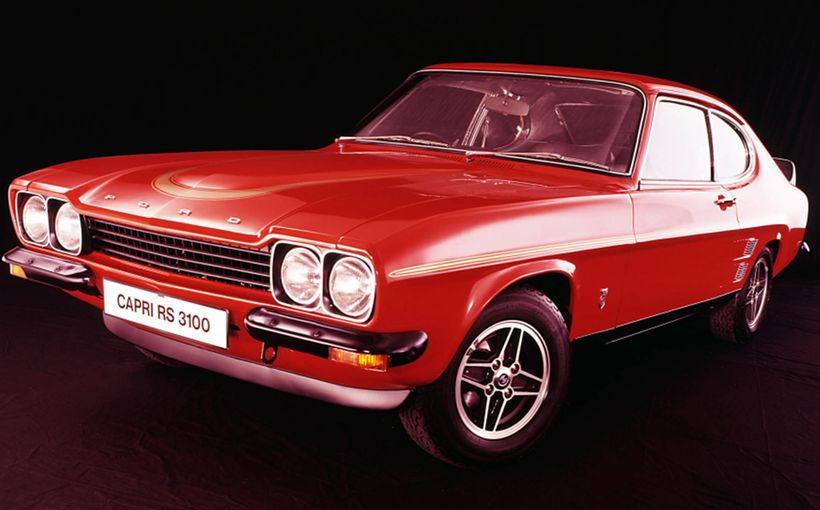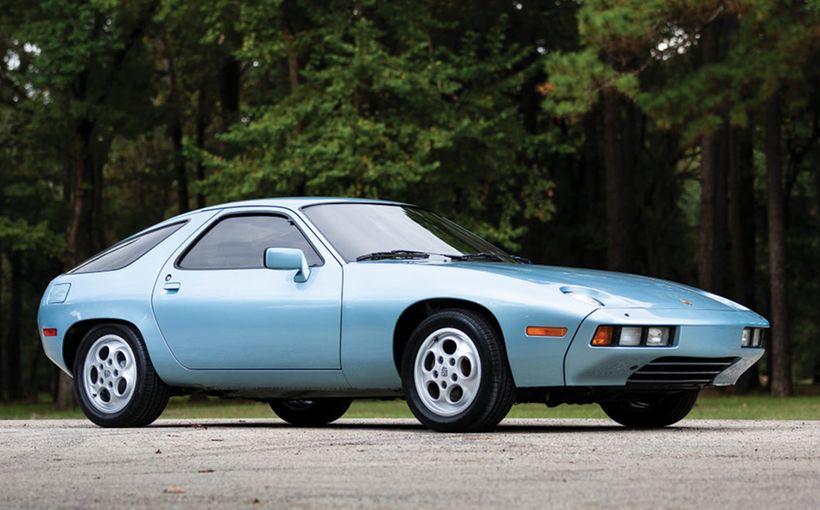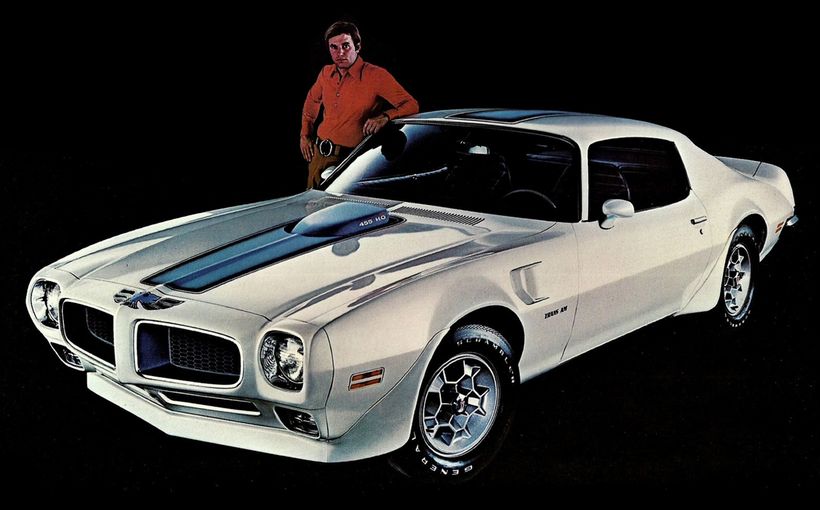Alfasud: Spicy Italian Recipe – Just Add Racing Drivers and Stir!

Alfa Romeo’s infamous Alfasud is perhaps best remembered for its propensity to rust before your eyes. However, there was a time in the 1980s when its admirable sporting qualities were showcased in a successful one-make series, which pitched amateur racers against top-shelf professionals including Dick Johnson, Colin Bond and Allan Grice.
Although it followed a ‘pro-am’ formula successfully used by Leyland Australia in 1980-81 to promote its Triumph TR-7, the Alfa Romeo Trophy which also ran for two seasons (1983-84) drew its inspiration from the Trofeo Alfasud (Alfasud Trophy).
This one-make format, established in Austria in 1975, allowed a low-cost entry into motor sport and was quickly embraced by other European countries. The annual Trofeo Europa Alfasud soon followed, which allowed the best drivers from the various national series to compete with each other in a sort of premier league. The idea was that an Australian driver could also take part.

The first Alfa Romeo Trophy in 1983 consisted of six rounds, each with a short preliminary race and a longer all-important final. Five rounds were held at Sydney’s Amaroo Park (with live TV coverage on the Seven Network) and one at Calder Park in Melbourne. The prize for the series winner was certainly worth fighting for – a trip to Italy to compete in the penultimate round of the Trofeo Europa Alfasud at Monza as part of the support program for the Italian Grand Prix.
When announcing the new series, Alfa Romeo Australia’s enthusiastic PR man Enrico Zanarini said that the Alfa Romeo Trophy would reinforce the company’s reputation as a true sporting marque in Australia. How could it lose, when an Alfasud was assured of victory in every race!
“Alfa Romeo’s racing programs across the world are probably only matched by Fiat,” Zanarini said. “We each race Formula One and compete in the World Rally Championship. Alfa Romeo also contests the ETCC (which a GTV6 won in 1982), local championships and of course has an enviable racing history. We felt it was time to remind people here in Australia that Alfa Romeos are, after all, sporting cars. We just wanted to sponsor motor racing and the Alfasud 1.5 was the obvious choice.”

Road testers raved about the front wheel drive Alfasud’s driving dynamics, even if they were less complimentary about some of its ergonomics, shoddy build quality and the use of low-grade (ie rust-prone) Eastern European steel to construct its body-chassis unit.
With a light kerb weight of only 870kg and a compact 2455mm wheelbase, the Alfasud’s fine handling was the result of MacPherson strut front suspension with a relatively wide track width matched with a coil-spring multi-link rear beam axle with a slightly narrower track, plus four-wheel disc brakes and rack and pinion steering.
Well balanced front-to-rear weight distribution and a low centre of gravity were other attributes, thanks largely to its horizontally-opposed four cylinder engine mounted ahead of the front axle line. The 1.5 litre (1490cc) flat four featured aluminium heads with belt-driven single overhead camshafts, a rugged three-bearing steel crank and (for Trophy cars) a single twin-choke downdraught carburettor. The Alfasud could sprint from 0-100km/h in 14.9 secs with a top speed of 100mph (160km/h).

All locally imported 1.5 litre Alfasuds were eligible for the series in a variety of body styles although the most popular choice was the readily available two door ti model.
Unlike the Trofeo Alfasuds competing in Europe, which were fitted with ‘trophy kits’ containing engine and suspension upgrades for racing, the Australian series was restricted to showroom stock or ‘Group E’ production car rules to minimise preparation/running costs and allow the cars to compete in other Group E events during the year.
All cars had to be fitted with ‘control’ tyres, which in this case were Goodyear Supersteel street radials. Shock absorbers were also free and most found that Bilstein gas shocks worked best. The standard exhaust system could also be cut after the first muffler and re-routed out to the side of the car, which not only made them sound a bit racier but also kept the hot exhaust away from fuel lines which reportedly caused vaporisation and spasmodic fuel flow.

Other race preparation included mandatory safety gear like a six-point seatbelt harness, roll cage, fire extinguisher etc. And although most Alfasuds left the Italian factory producing about 75bhp at 5800rpm, an extra 5bhp could be extracted by paying close attention to carburettor settings and cam timing.
The pro-am format attracted no less than Peter Brock, Colin Bond, Dick Johnson and Tony Edmonson to serve as ‘hares’ for the 18 amateur ‘tortoises’ to chase. However, Brock pulled out of his drive at the last minute and was replaced by open-wheeler ace Alfredo Costanzo.

1983 Alfa Romeo Trophy
One of the greatest benefits often derived from pro-am tournaments is that some exciting new talent shines through. The Alfa Romeo Trophy was no exception.
Two relatively unknowns in Joe Beninca and Tony Longhurst emerged as precocious talents that made the pros work much harder for their money than they probably expected. Longhurst, a national water-ski champion, would of course continue his rise to the top level of touring car racing and become a multiple Bathurst 1000 winner.
However, it was Joe Beninca – a 23 year old Melbournian backed by his family’s Alfa Romeo dealership – who really stirred the spaghetti sauce by claiming pole position at Amaroo Park’s opening round.

He also won the start of the final and led the field handsomely until he missed a gear allowing Johnson to get by. Even so, in an action-packed encounter Beninca finished second ahead of Bond and numerous other well-established names sprinkled through the so-called ‘amateur’ ranks.
Beninca was again the pace-setter five weeks later in round two. The young Victorian made Bond work very hard to find a way past and claim his first win, crossing the finish line with Beninca nailed to his rear bumper ahead of evergreen veteran David Seldon in third. It was another close and action-packed race which saw Costanzo drill the earth wall hard on Bitupave Hill after being nudged from behind.
Heavy rain made conditions treacherous at Amaroo for round three which produced a third different winner in three rounds, with Seldon masterfully steering his way through a myriad of spinning cars to claim his first win ahead of Costanzo, Bond and Johnson.

Allan Grice showed what a true ‘pro’ he was after accepting an invitation from Edmonson to guest drive the Tasmanian’s car in round four. No stranger to Amaroo (Gricey’s race team was based there for many years), he took pole position before waltzing away from the field to cross the line well ahead of rapidly rising star Longhurst with Bond third.
By the time the Alfasuds headed south to Melbourne for Calder Park’s penultimate round, Bond and Johnson were emerging as the strongest contenders for the series win and the coveted Alitalia flight to Monza. A fiercely determined Johnson won from Bond, with Longhurst continuing to impress by claiming third.
And so it came down to a final round decider between Bond and Johnson at Amaroo, with Bond holding a slim three-point lead. Johnson’s mission was simple – win the race to win the series.

Johnson took pole position and led early with Bond breathing down his neck. As the duelling pair crested the top of Bitupave Hill on lap four, the two cars touched sending Johnson off the circuit and into a series of spectacular car-destroying barrel rolls. Fortunately he emerged shaken but uninjured. Bond won the race and the trip to Italy.
No surprise that Johnson was fuming about the incident, claiming that Bond was at fault. Bond counter-claimed that Johnson had moved over on him, which was backed up by flag marshalls who witnessed the clash. Even so, the incident soured relations between the two pros.
At Monza, Bond certainly did Australia proud by qualifying 11th fastest out of almost 100 cars in the penultimate round of the Trofeo Europa Alfasud. He then forcefully carved his way through the pack to what was looking like a brilliant top-five finish, until a driveshaft snapped and forced his withdrawal.
Even so, the mercurial Aussie greatly impressed European rivals and passionate Italian fans with his prodigious speed and racecraft. They also couldn’t help but notice that a bloke by the name of Bond was driving a car carrying the racing number 7. No surprise they christened him ‘Goldfinger’!

1984 Alfa Romeo Trophy
The inaugural series in 1983 had been a great success for Alfa Romeo in demonstrating the sporting prowess of the Alfasud. The Alfa Romeo Trophy was widely acclaimed as being the most successful newcomer to the motor racing scene.
Although the series returned for a second and final year in 1984, competitor numbers were not as strong. Perhaps the incentive for winning the series wasn’t as compelling this time around, with first prize being a brand new Alfa 33 rather than the coveted European race drive offered the previous year (no surprise Alfa critics joked that second prize was two Alfa 33s)!
1983 protagonists Johnson and Bond renewed their fierce rivalry, joined in the pro ranks this time by Allan Grice. One of the finds of the first series, Tony Longhurst, also returned with enough raw speed and experience to pose a genuine threat to the established stars.

After another action-packed five rounds featuring lots of doorhandle-to-doorhandle combat the series win again came down to a final round decider, this time between Grice and Longhurst.
Although the talented Queenslander claimed pole position from Beninca, Johnson and Grice, it was Beninca who made the better start to lead the field up Bitupave with Grice and Longhurst in hot pursuit. Desperate to pass Grice and win the series, Longhurst nudged the rear of Grice’s car hard enough in the final turn to send him spinning off the track onto the infield.
Longhurst went on to finish second behind Beninca, which gave him enough points to win the series from a furious Grice who quickly recovered to finish third. However, while Longhurst was spraying the champagne, Grice was lodging an appeal with the stewards against the hot-headed Queenslander’s rough-house tactics. At a later hearing Grice’s appeal was upheld, resulting in Longhurst being excluded from the results and losing the series to Grice!

The fact that both of the Alfa Romeo Trophies ended in controversial winner-take-all showdowns was a reflection of the sheer intensity of the competition between some of Australia’s best professional and amateur racing drivers in identical equipment.
And as a marketing exercise, it was pure gold for Alfa Romeo Australia as it could not have asked for a more credible demonstration of the Alfasud’s thoroughbred sporting qualities. Sadly, though, it could do nothing to stop the creeping corrosion that would destroy so many of these brilliant little Alfas.









